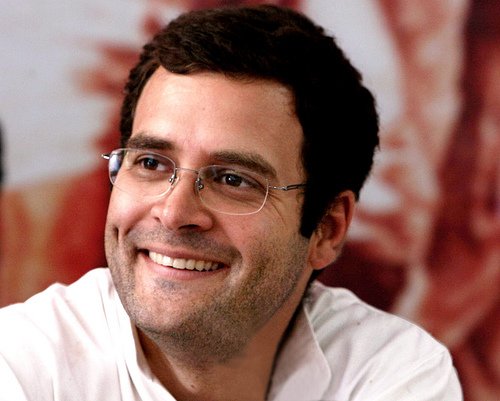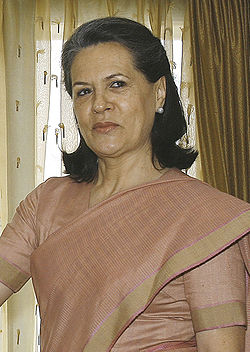The Narendra Modi led government in India presented its third budget today. The budget was presented by finance minister Arun Jaitley, in a nearly 100 minute long speech.
Before the budget was presented the fear was that the Narendra Modi government is gradually going back to the Congress party’s way of doing things, at least on the economic front. The Congress party has governed India in every decade after independence.
So what is the verdict after the budget? Modi seems to have titled the farm way. As the finance minister Jaitley said during the course of his speech: “We need to think beyond ‘food security’ and give back to our farmers a sense of ‘income security’. Government will, therefore, reorient its interventions in the farm and non-farm sectors to double the income of the farmers by 2022.”
This isn’t surprising given that agricultural growth has been very low at the rate of 0.5% per year, over the last two years, due to bad monsoons. Further, the agricultural growth is expected to be at 1.2% this year, much lower than the overall growth of 7.6%.
Initiatives allowing farmers a better access to the market have been planned. Plans have also been made around judicious use of fertilizers, to increase crop yields across land which does not have access to irrigation and so on.
The government has also planned to offer incentives around the production of pulses. In the recent past, price of the tur dal (pigeon pea) has touched Rs 200 per kg and given that India needs to produce more pulses.
But that was the good bit.
Before the Modi led Bhartiya Janata Party (BJP) came to power in the 2014 Lok Sabha elections, the Congress led United Progressive Alliance (UPA) with Manmohan Singh as prime minster, was in power for a decade.
Singh’s term as prime minster, especially the second term, was marked by an increasing amount of doles as well as corruption. Loans to farmers were written off. The Mahatma Gandhi National Rural Employee Guarantee Act (MGNREGA) was passed and so was the Food Security Act. In July 2014, Modi had slammed the UPA government’s food security scheme by saying: “The government in Delhi thinks that just by bringing in the Food Security Bill there will be food on your plate.”
Modi has also mocked the other big Congress scheme, the MGNREGA in the past. In February 2015, Modi had said: “I will ensure MGNREGA is never discontinued. It is proof of your failings. After so many years of being in power, all you were able to deliver is for a poor man to dig ditches a few days a month.”
The Modi government has done a u-turn on this front and allocated Rs 38,500 crore to the scheme for 2016-2017. This is the highest ever allocation to the scheme, the finance minister Jaitley proudly claimed during the course of his speech. Modi is now looking more and more similar to Manmohan Singh. He is a better marketer though than Singh and his regime isn’t corrupt. Not until now, at least.
MGNREGA aims at providing at least 100 days of guaranteed employment in a financial year to every household whose adults are willing to do unskilled manual work. The trouble is that MGNREGA essentially became another scheme where money is simply given away without any substantial assets being created.
Modi in the run up to the 2014 Lok Sabha elections had promised minimum government and maximum governance. But with the allocations to MGNREGA being at its highest ever level, looks like that promise has gone out of the window, at least for now.
The economist Surjeet Bhalla has called MGNREGA as the fourth most corrupt institution in the world after FIFA, the BCCI (the board that governs cricket in India) and the public distribution system used by the Indian government to distribute food grains as well as kerosene to the poor.
The food security scheme provides rice and wheat at Rs 3 and Rs 2 per kg to the poor. The Economic Survey of the government presented on February 26, points out that nearly 54% of the wheat, 48% of the sugar and 15% of rice, meant to be distributed through PDS is lost as a leakage.
The price at which the government sells the food grains and the price at which it buys is essentially the food subsidy that it provides. The allocation to food subsidy is at Rs 1,34,835 crore for 2016-2017. This has come down a little from the Rs 1,39,419 crore that was allocated last year.
Nevertheless, no effort has been made to tackle this leakage which costs the country a lot of money. The Report of the High Level Committee on Reinventing the Role and Restructuring of Food Corporation of India presented a report in January 2015 to tackle this issue. It has since been gathering dust.
Further, what India needs is the creation of huge number of jobs. The organised sector in this country continues to remain very small. In 1991-1992, the total number of people working in the organised sector had stood at around 27 million. Since then the number has jumped to around 29.6 million (as of 2011-12, the latest data available).
At the same time nearly 58% of India’s population continues to be dependent on agriculture which generates around 16-18% of India’s gross domestic product. What this tells us is that there is huge overemployment in the sector and jobs need to be created in other sector so that people can move away from agriculture. And that is clearly not happening.
Modi’s win in 2014 tapped into the aspiring class of India and promised to create jobs. In fact, in November 2013, Modi had said: “If BJP comes to power, it will provide one crore jobs which the UPA Government could not do despite announcing it before the last Lok Sabha polls.”
The government is betting on the creation of road and railway infrastructure for the creation semi-skilled and unskilled jobs required for moving people away from agriculture. The finance minister has allocated Rs 97,000 crore towards the road sector. Together with the capital expenditure of the Railways, this amounts to a good Rs 2,18,000 crore during the course of the year.
The question is will this be enough to move people away from agriculture by creating a substantial number of jobs? There are no easy answers for that.
(Vivek Kaul is the author of the Easy Money trilogy. He tweets @kaul_vivek)
A slightly different version of the column appeared on BBC.com on February 29, 2016


